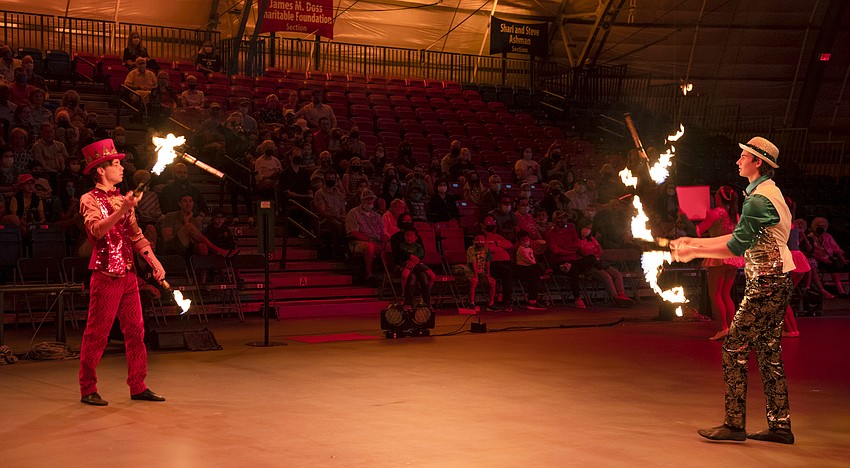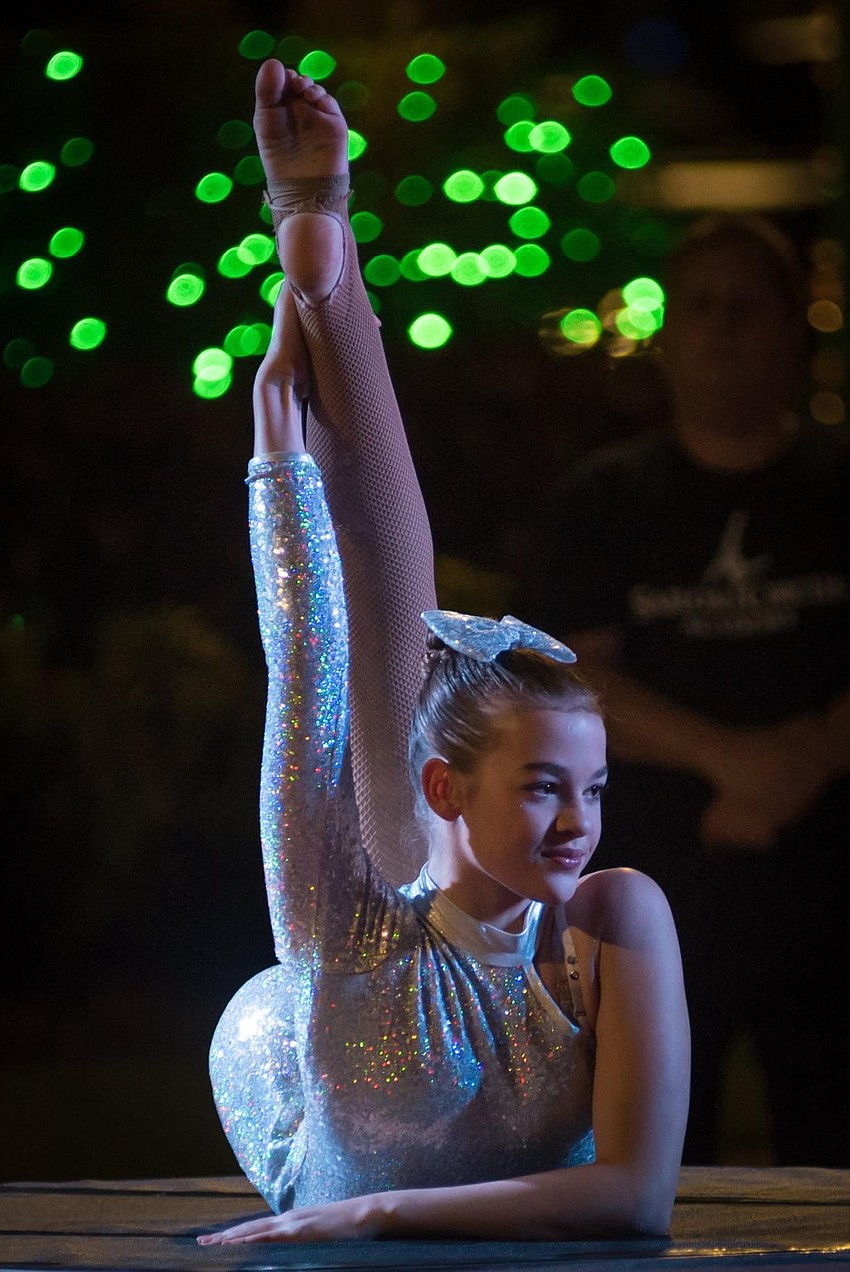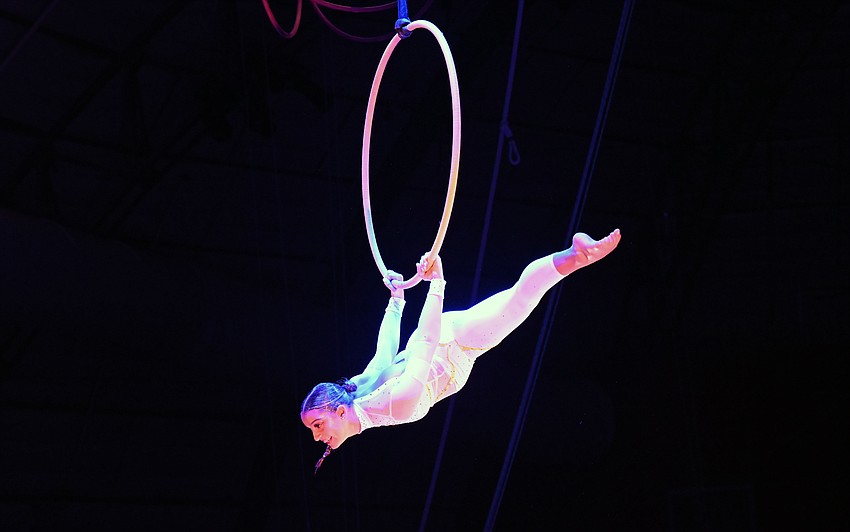- November 22, 2024
-
-
Loading

Loading

The sentence comes out of his mouth so easily and so naturally that it doesn’t even seem remarkable at the time. Alex Hume is talking about his background and about his particular collection of skills and experience that have led him to this point in life.
“I was a soccer player for elementary school,” says Hume. “In the middle of sixth grade and seventh grade, I was a gymnast.
"And in eighth grade, I joined the circus.”
Hume, who performs on trapeze, wall trampoline and juggling, is gearing up for his fourth edition of the Sailor Circus — the longest running youth circus in America — which will take place later this month.
He’s working with dozens of like-minded peers on a daily basis at Sailor Circus Arena and learning that he can do so much more than he ever imagined would be possible.
Hume came to the Circus Arts Conservatory with beginner’s skills in juggling and unicycle, and now he’s preparing for his first show in which he’ll catch flying tricks on the trapeze. Now, moments before practice begins, he contemplates how circus is different than sports.

“You’re working with others. You’re performing,” he says. “I would consider this more like theater; You’re putting on a show and there’s no competition with your peers. There’s never any one-upping each other.
"I would say it's a very healthy environment, which I'm kind of impressed with. That doesn't really happen very often. I would say this is a special circumstance where everyone's just grateful to be here.”
Destiny Overholt, a Sarasota High School sophomore, would tend to agree. Overholt, a contortionist, tried cheer and gymnastics and even playing the violin as an extracurricular activity before she found the circus. She says she began learning contortion through YouTube and Instagram at age 13 before she came down to the CAC.
But now, she’s working every day and seeing the results.
Overholt says she is at the Sailor Circus Arena four days a week for at least four hours a day, and she says being a part of the circus program has helped her time management and generally enriched her life.
“There’s a lot of hard work and determination that goes into everything,” she says. “It's really nice being around people like you that love doing the same thing you love to do.”
In the beginning, says Overholt, it was really hard to imagine that she’d be able to get to this point. She started out doing circus summer camps and learned how much she enjoyed it, and then the circus coaches saw her potential and began polishing her skills.

Overholt says that early on, the hardest part was learning how to control her breathing. Over time, the discipline of regular practice allowed her to get stronger and more flexible, and now she’s progressed to the point where she can achieve a triple fold.
Folks, that’s exactly what it may sound like.
“That one’s a really hard one to get, because you’re folded into three,” says Overholt. “It takes a while to get flexible enough to do it. You’re sitting like on your knees and you bend backwards and you put your head all the way through your legs. I find it a lot easier to get out of than into the trick. To get in, you have to grab your knees and pull yourself all the way in. But to get out, you can just release your legs and slide out.”
Overholt, like Hume, is considering a career in the circus arts.
But for one of their peers, that decision has already been made.
Silks and lyra artist Emma Clarke, the daughter of CAC managing director Jennifer Mitchell, has spent nine years in the program, and she’s gearing up for her final show with the Sailor Circus.
Clarke isn’t sure whether she will go to a circus college, but she knows she wants this to be her life.
“This is like my family,” she says. “I try to be so supportive of everyone because I've known them for nine years.
"It's a long time to be with people every day for seven hours.”

Much like Hume and Overholt, Clarke tried different activities before she became a circus performer. She started dance at an early age and transitioned to swimming, but she can recall being very young and transfixed by CAC founder Dolly Jacobs on the silks.
All of a sudden, something clicked. And this was all Clarke wanted to do.
It’s still that way, all these years later, even after spending countless hours working her muscles and working her mind. Clarke says circus has impacted her life so much for the better that it makes her a little bit sad when people say they can’t imagine themselves doing it.
“We have open arms for everyone,” she says of the circus community. “Anyone is always welcome, no matter how shy you are. And I always tell people that because I do have people come up to me and they're like, ‘I would love to do that but I'm just not strong enough.’ You're not strong enough in the moment, but you can get there. If you take the right steps.”
Hume, along those lines, says that he’s trained for a year as a trapeze catcher and that he’s still getting the hang of it. Then again, he’s a grounded young man who says that while juggling is “second nature” to him, he also considers himself “an incredibly average juggler.”
Now, as a trapeze catcher, he finds himself subverting his ego and doing everything he can to make sure the flyer is safe. There he is, a few dozen feet above the ground, making split-second decisions about whether he can safely catch a spinning body or not.
That's not something he ever studied in homeroom.
But Hume, like Clarke and Overholt, want people to know that they can do it too if they want it badly enough.
“Everyone can circus,” says Hume. “There’s nothing special about any of us. We just joined and we learned the skills we didn't have.
"Thanks to the amazing coaching, we all learn those skills, and it's just a great place to be. And I would strongly encourage everyone to take advantage of this opportunity they've been given in Sarasota.”